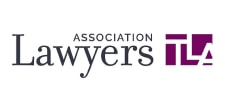The economic immigration system in Canada is now operating more efficiently than ever, at least that is the intent of the revised “Express Entry” program that started in January 2015. Express Entry gives immigrant workers quicker access to potential jobs with prospective employers, and allows businesses to tap into an ever-growing foreign labor pool.
Based largely on a ranking system that assigns points to individuals and requires them to register with the federal Job Bank website, the Express Entry program was designed to facilitate the employment of prospective immigrants to Canada, and restrict entry into the country to those who have obtained a job offer or otherwise have excellent qualifications.
The main issues associated with the old system include first come, first serve applicant processing, costly recruiting expenses for employers, the difficulty of the system at large due to the presence of multiple actors, and long permanent residency processing times (a year minimum).
Giving businesses a better hand in economic immigration
That being the case, the recent revisions put much more power in the hands of Canadian employers, putting their interests first as it pertains to recruiting economic immigrants. Individuals, who partake in the Express Entry program and have a job offer or nomination from a province or territory, are much more likely to be granted an Invitation to Apply (ITA) for immigration to Canada.
Businesses interested in engaging Canada’s immigrant labor market have multiple options at their disposal. Foreign workers may either be offered a position by a Canadian company once in the Express Entry pool, or the worker could first apply for a work permit then register through the Express Entry system once in Canada, in order to apply for permanent residence.
Express Entry registrants who do not have a job offer mush register with the Job Bank. This online search tool pairs these individuals with employers based on their specific skillsets, work experience, and knowledge. Businesses may also utilize different private sector job boards and recruitment activities for their hiring needs.
Once an employer-employee match is made, the candidate is given a job offer, which is then followed by an application to the federal human resources authorities for a Labour Market Impact Assessment. If the job offer is approved, the candidate will likely receive sufficient assessment points to obtain an Invitation to Apply for permanent residence. Those who receive an ITA must apply for permanent residence through one of the existing categories such as Skilled Worker or the Canadian Experience Class. Qualified applicants have 60 days to apply for permanent residency once an offer has been made.























